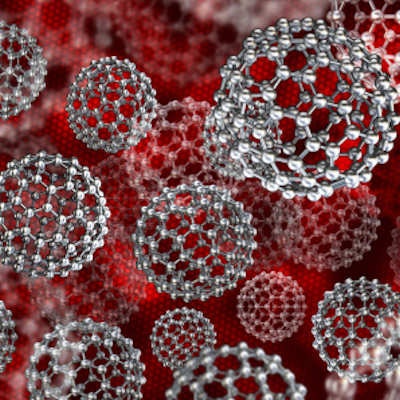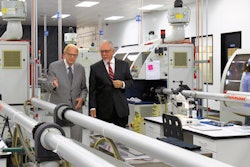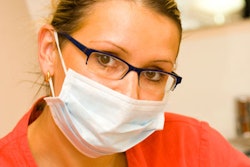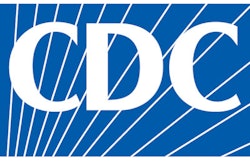
How's the air in your dental office or laboratory? Could it be harmful to the health of everyone who works there? Researchers analyzed the size and concentration of nanoparticles in the air of typical dental facilities to learn more.
They found that the size and concentration of these particles varied depending on the amount and type of activity being conducted, and dental employees may be at risk.
"Dental employees are exposed to nanoparticles in their working environment and are therefore potentially at risk for certain respiratory and systematic diseases," wrote the group led by Andreja Lang, who is on the medical faculty at the University of Ljubljana in Slovenia (Journal of Occupational and Environmental Hygiene, January 25, 2018).
It's in the air
Nanoparticles are released during the treatment of various dental materials. Particles smaller than 50 nm can spread throughout the working environment, as well as enter the body and travel through the alveolar membrane into the circulatory system.
“Dental employees are exposed to nanoparticles in their working environment and are therefore potentially at risk for certain respiratory and systematic diseases.”
These particles can affect the liver, spleen, lymphatic glands, and, in some cases, the heart, kidneys, medulla, and brain. Published reports link these particles to Alzheimer's disease, Parkinson's disease, and the development of tumors. Previous studies have found that chronic exposure to particles 5 µm or smaller or nanoparticles can cause local or systemic toxicity.
Because information is limited on nanoparticles in the air under actual working conditions in dental offices and laboratories, the authors measured nanoparticle concentration in a dental office and in the clean and unclean parts of a dental laboratory. They obtained measurements during two weeks in July 2012 and for 15 days in April 2013 at the Department for Prosthetic Dentistry Dental Clinic in Ljubljana, Slovenia. During the first period, work activities were lighter since it was the beginning of the summer holidays; the workload was heavier during the second period.
The laboratory was on the first floor of the dental clinic and contained eight workspaces where six dental technicians worked eight hours a day. Swing doors separated the two parts of the laboratory, which both had natural ventilation through windows that opened.
The dental office also was on the first floor of the dental clinic and had natural ventilation with windows as well. It contained seven dental workspaces, a sterilization room, and an administrative desk.
The researchers assessed the size distribution of nanoparticles with a scanning mobility particle sizer (TSI). They took measurements in the dental clinic and both parts of the dental lab over three- to four-day periods, with each scan lasting five minutes
Through the use of x-ray dispersive analysis, they found the presence of carbon, potassium, oxygen, iron, aluminum, zinc, silicon, and phosphorus in the form of nanoparticle clusters smaller than 100 nm.
"Chemical analysis of the collected nanoparticles from the air of the dental laboratory confirmed that they originated from dental ceramics and alloys," the study authors wrote.
The researchers also recorded the average nanoparticle concentrations during working periods:
- 45,000-56,000 particles/cm3 in the clean lab
- 28,000-74,000 particles/cm3 in the unclean lab
- 21,000-50,000 particles/cm3 in the office
These were significantly higher than the average concentrations recorded during nonworking periods:
- 11,000-24,000 particles/cm3 in the clean lab
- 14,000-40,000 particles/cm3 in the unclean lab
- 13,000-26,000 particles/cm3 in the office
| Avg. concentration of particles (particles/cm3) by location and workload | ||||
| Period | Year | Clean lab | Unclean lab | Dental office |
| Working | 2012 (lighter workload) | 56,283.4 | 28,064.1 | 21,142.6 |
| 2013 (heavier workload) | 45,351.2 | 74,073.2 | 50,041.2 | |
| Nonworking | 2012 (lighter workload) | 11,003.8 | 14,499.7 | 12,626.0 |
| 2013 (heavier workload) | 23,549.5 | 40,093.6 | 26,317.4 | |
"Working procedures performed in all three environments increase nanoparticle concentrations, and therefore present a potential hazard to dental employees," the authors wrote.
Particle concentrations in all three spaces exceeded the limit for safe exposure of 3 mg/m3 for particles smaller than 5 µm set by the American Conference of Governmental Industrial Hygienists. However, nanoparticles alone exceeded this threshold only in the clean part of the lab, the authors reported. This was not surprising, given the small contribution of nanoparticles to cumulative mass, they added.
"The fact that the safe exposure limit was exceeded in the clean part of the dental laboratory causes a serious concern," the group wrote.
Preventive measures needed
The authors noted that factors such as inflow of outdoor air and the outside environment can affect nanoparticle concentration, but such values were low compared with the highest peak total concentrations, which matched up with working hours. This led them to conclude that the majority of nanoparticles were due to the use of dental materials. However, they were unable to determine which procedures caused the highest increase in nanoparticle concentrations, except for plaster cast processing and metal molding.
"Taking into account that inhaled nanoparticles may present an occupational hazard to human health, it is of great importance to determine the right preventive measures against occupational exposure of dental personnel," they concluded.



















